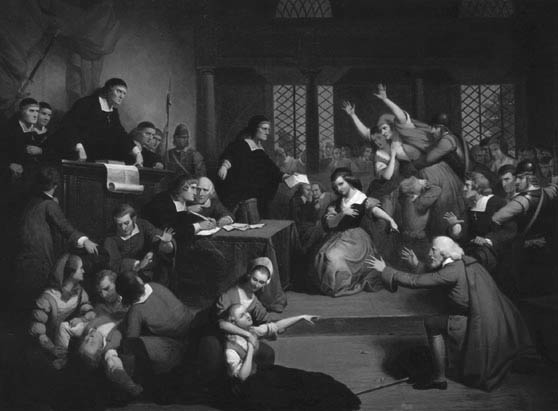The Girls of the Salem Witch Trials
The main instigators of the witchcraft accusations were at first a pair and eventually a group of young girls. For reasons known only to them, 9-year-old Elizabeth Parris and 11-year-old Abigail Williams dabbled in fortune-telling and then began to appear to exhibit strange behavior. They had depended on the Parris family slave Tituba for guidance in their pursuit of fortune-telling and pointed the finger at her when their actions were discovered.
The girls found willing conspirators in their village friends. Soon, a handful of girls was behaving oddly and making accusations. Among these were Ann Putnam, Elizabeth Hubbard, Mercy Lewis, Mary Walcott, Sarah Bibber, Susanna Sheldon, Betty Booth, and Mary Warren. As the accusations began to pile up, Warren, who had directly accused John and Elizabeth Proctor of witchcraft, admitted to lying about her afflictions and accused the other girls of lying as well. This occurred in early April but did little to stem the tide. The girls continued to accuse primarily women of the village of witchcraft. Soon, Warren was back in the fold.
The girls continued to be the main accusers throughout the year of 1692, which resulted in the executions of 20 people. They continually referred to mysterious "afflictions," such as being bitten and pinched by people or things that no one could see, having their throats choked or their tongues silenced, and being victims of violent seizures and catatonic states. As the examinations went on (and were open to the public, no less), the girls were seen to be showing evidence of all sorts of spiritual maladies. In some cases, they said they couldn't approach the accused because some hidden force prevented it. In other cases, they cried out whenever the accused shifted her feet. Girls were seen to faint in court or run screaming from the room. They were seen to scream at odd moments and claim to feel evil intents being blasted their way.
|
|
Social Studies for Kids
copyright 2002–2025
David White






